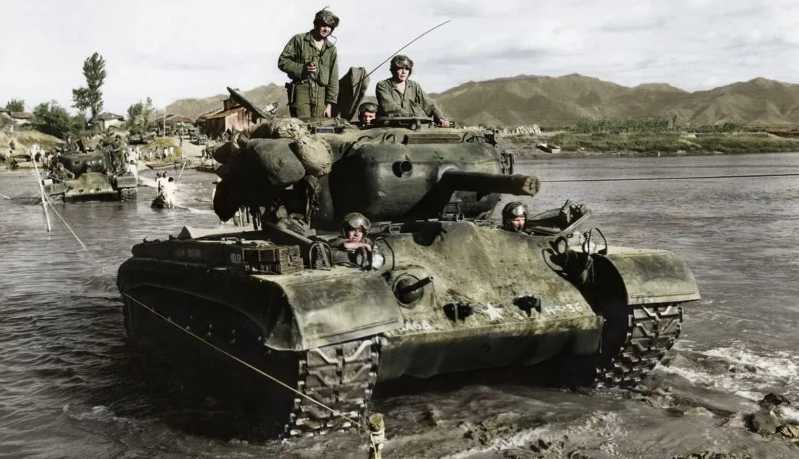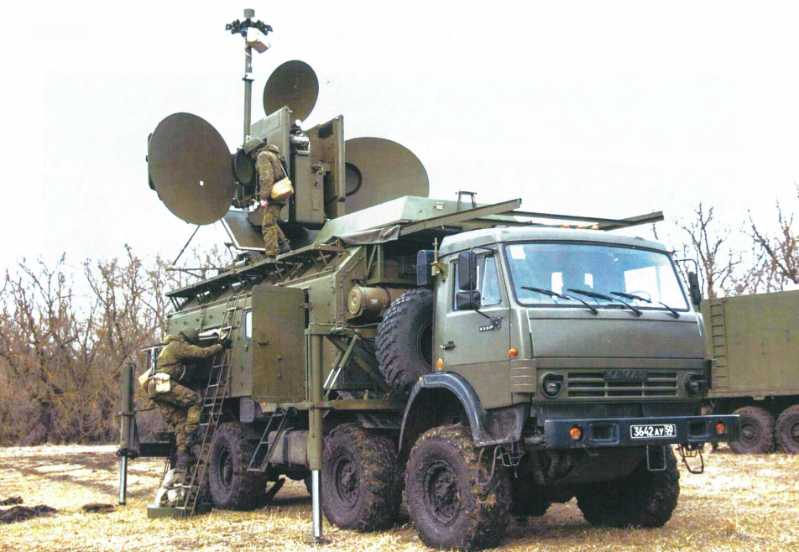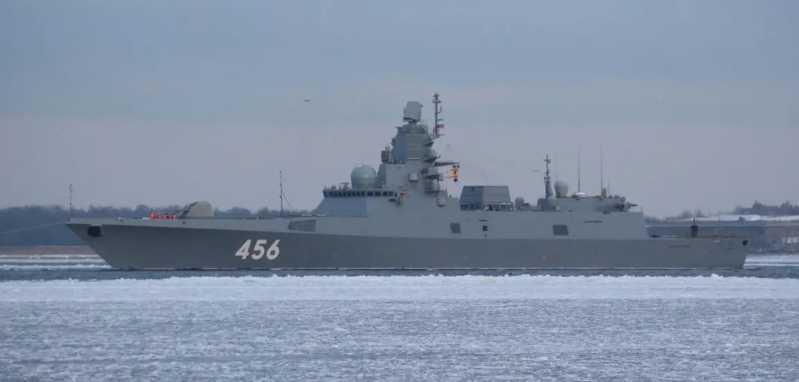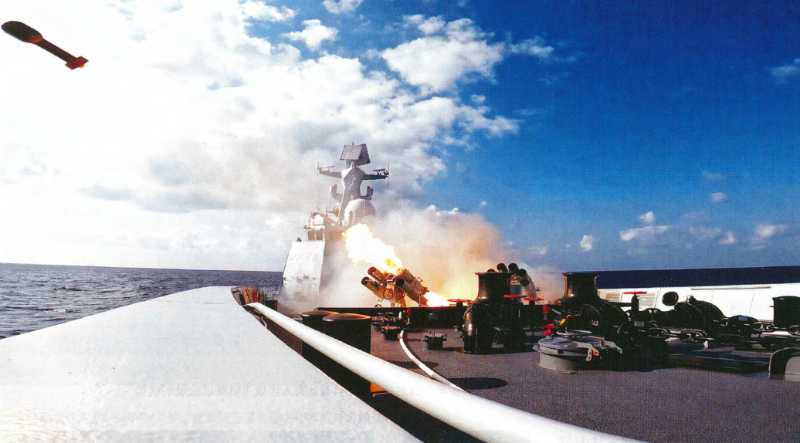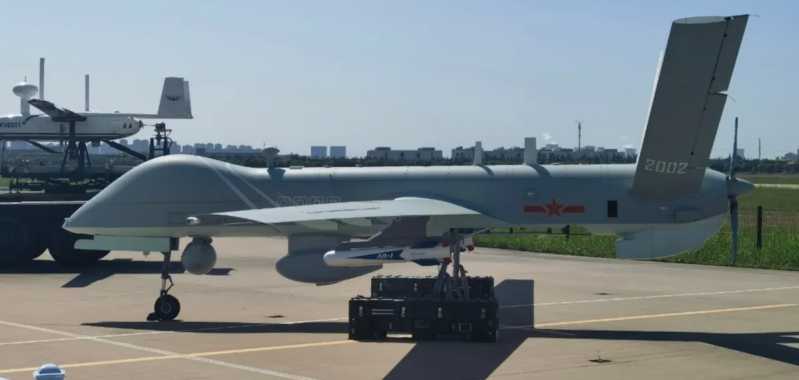As the pinnacle of American tanks in World War II, the appearance of the M26 "Pershing" medium tank marked the qualitative improvement of US tanks. It was much better than the M4 tank in terms of firepower and protection, and its overall performance also exceeded that of the Soviet T-34/85 and the German "Black Panther" medium tank. While enabling the US military to have world-class tanks, it also laid the foundation for the US military to develop medium, heavy and main battle tanks after World War II.
Afterwards, the United States also installed a short-barreled 105mm howitzer on this type of tank and developed the M45 medium support tank, which can provide fire support for infantry on the battlefield with direct and indirect firepower, and has been praised by US soldiers.
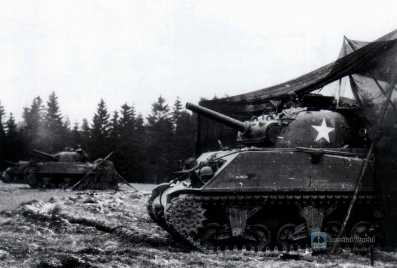
Synchronous evolution
Different from the battlefield environment encountered by the Soviet armored troops, the US armored troops rarely had large-scale armored combat throughout the Second World War. Especially after the Normandy landing, the German armored troops were often "taken down" by the Allied Air Force during the march. The main task of the US tanks became to support the infantry. At that time, the high-explosive shells equipped with US tanks had limited charge and were still insufficient when dealing with permanent fortifications such as bunkers.
In this case, it became a "rigid need" for the US Army to put howitzers that could fire high-explosive shells (compared to the high-explosive shells equipped with US tank guns at that time) on tanks. Therefore, the M4 series of medium tanks equipped with 105mm howitzers came into being. In actual combat, these tanks performed well, not only becoming a powerful protector of the US Army infantry, but also leaving a deep impression on the US Army’s top brass.
As the Allies continued to advance towards Germany, German heavy armored vehicles including the "King Tiger" put pressure on the Allied tankers driving the M4 series medium tanks. In order to fight against these steel beasts, the US military industry stepped up the development of the T26 series heavy tanks, which were still in the prototype development stage at the time, and sent 20 of the first 40 T26E3 (renamed M26 after March 1945) to the European battlefield for actual combat testing. The test results showed that the vehicle had excellent performance and was very useful, and was well received by tankers. Therefore, the production progress of the T26E3 was greatly increased. If the war in Europe continued until
1946, the vehicle would undoubtedly become the main combat weapon of the US armored forces. Obviously, the T26 series heavy tanks (later reclassified as medium tanks) will replace the "status" of the M4 series medium tanks, and it is natural to develop other variants based on its chassis. As early as the beginning of the development of the T26, some people proposed to refer to the successful experience of the M4 series and develop an infantry support tank equipped with a 105mm howitzer based on its chassis. Because the vehicle has thicker armor than the M4 series, it can more effectively fight against enemy anti-tank artillery positions and permanent fortifications. Soon, the 105mm howitzer tank prototype code-named T26E2 appeared on the drawing board.

In October 1944, the drawings of the T26E2 were sent to T26 series tank manufacturers including Fisher Tank Arsenal under General Motors and Detroit Tank Arsenal under Chrysler. Fisher Tank Arsenal then produced a new turret equipped with a 105mm howitzer and a matching gun shield, and combined it with the chassis produced by the Detroit Tank Arsenal to form the T26E2 prototype.

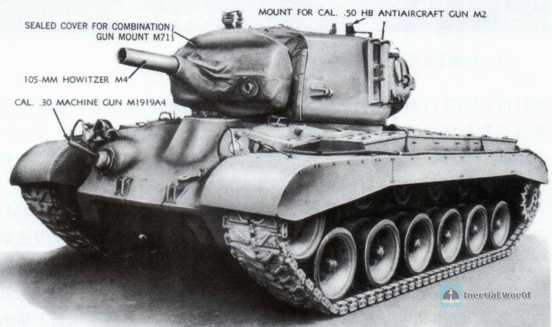
The production of the T26E2 prototype was progressing smoothly, but the testing was seriously delayed. The Aberdeen Proving Ground test project, which was originally scheduled to end in April 1945, was delayed until July of that year. The main reason why the prototype was not delivered to the Aberdeen Proving Ground until nearly two months after the end of the war in Europe was that the model was no longer considered too important by the US Army’s top brass. Because the experience of the European battlefield showed that the high-velocity 90mm tank gun could often play a role in defeating the enemy, the original plan to focus on the production of 105mm howitzer tanks was also changed.
However, considering that Japan had not yet announced its unconditional surrender, Fisher Tank Arsenal and Detroit Tank Arsenal still received the production order of T26E2 in July 1945. If everything went well, the vehicle would be put into the "Operation Downfall" landing on the Japanese mainland together with the M26.
Since Japan announced its unconditional surrender on August 15, the planned "Operation Downfall" was cancelled, and a large-scale military industry shutdown followed. Naturally, T26E2 was not immune. A large number of unfinished orders were cut or even directly cancelled, and only 185 vehicles were finally produced, which became the final total output of T26E2.
Due to the development of tank technology, the top leaders of the US Army believed that the weight of the next generation of tanks would be greater than the M4 series, so the heavy tank originally planned to be developed The T26 series was also reclassified as a medium tank, and the T26E2 heavy tank was renamed the M45 medium tank in May 1946.
Old wine in a new bottle
As a new generation of infantry support tanks planned by the US Army, the M45 medium tank is consistent with the M26 of the same series in most places, including the chassis, except that it is equipped with different guns and some changes to the turret to adapt to the gun. At first glance, it looks like an M26 with a shorter "nose".
The M45 medium tank has a total length of 6.34 meters, a width of 3.51 meters, a height of 2.78 meters, and a combat weight of 41.7 tons. Compared with the M4 series, the combat weight has increased significantly, but compared with the German "Zoo" series of the same period, the "body" is still On the one hand, it was because the U.S. Army was mainly in an offensive posture at the time, so it had high requirements for mobility. At the same time, the U.S. Army’s equipment needed to be transported to major war zones by sea, and the excessive size would inevitably affect the transportation efficiency.
Due to its "wide and fat body", in order to ensure mobility, the M45 was equipped with a Ford GAF series 8-cylinder 18-liter gasoline engine as power. The engine has a maximum power of 500 horsepower. The engine is matched with an automatic transmission with a torque converter, which was called a "luxury configuration" at the time, with 3 forward gears and 1 reverse gear. Due to its strong power, its mobility is good, with a maximum speed of 48 kilometers per hour and a maximum range of 160 kilometers.
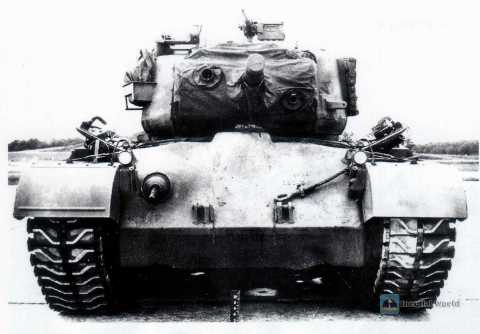
It is worth mentioning that, Like the entire T26 series, the M45 uses a rear-mounted gearbox and engine layout, coupled with the torsion bar suspension that has been verified on the M18 tank destroyer, which is a first for American tanks. The benefits of this design are obvious. On the one hand, the height of the vehicle body is lower than that of the later M4 models, avoiding the defect of the former vehicle body being too high, which has been criticized by many people. At the same time, it is convenient for maintenance and reduces the difficulty of logistics. Although the performance of the vehicle body has been improved, the M45 has "stood still" in terms of firepower. It directly inherits the M4 22.5-caliber 105mm howitzer used by the M4 series medium tanks. The gun is improved on the basis of the M2A1 towed howitzer. There is no substantial improvement in power compared to the model used in the M4 series tanks. It is just to adapt to the new tank and rotate the gun bolt body 90 degrees and change the sliding direction of the gun bolt from longitudinal to transverse. The shells used by the M45 are semi-fixed, and the charge can be adjusted according to needs. The types of shells used include M1 high-explosive shells, M67 armor-piercing shells, and M60 white phosphorus shells. Among them, when using the M67 armor-piercing shell, it can penetrate 100 mm homogeneous steel armor, which is enough to "protect itself" when facing mainstream armored vehicles in the late 1940s. It is worth mentioning that the main gun of the M45 is equipped with a vertical stabilizer and has an elevation angle of -10°~35°.
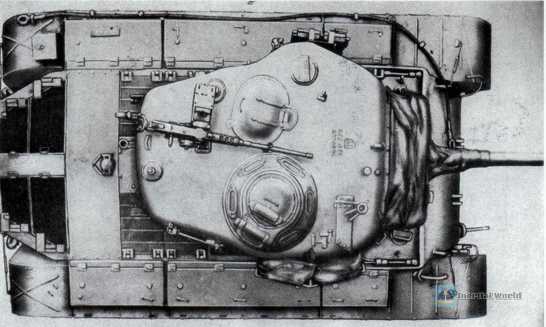
Since the M4 gun weighs only 520 kg, which is almost half the weight of the M3 90 mm tank gun (1030 kg), in order to maintain the balance of the turret, the M71 gun shield armor used by the gun has an astonishing thickness of 203 mm, and the thickness of the front and sides of the turret has also reached 127 mm, which is a significant increase compared to the T26E3/M26. Due to the different shells used by the artillery, the M45 turret carries more shells than the T26E3/M26, and can carry a total of 74 105 mm shells. In addition, 8 shells can be carried in the body.
In addition to the main gun, the M45 is also equipped with 3 machine guns, which are roughly the same as the M4 series. One 12.7mm M2HB heavy machine gun is located at the rear of the turret top, mainly serving as an anti-aircraft machine gun. Of the remaining 2 7.62mm M1919A4 machine guns, one is located on the left side of the main gun as a parallel machine gun, and the other is located in the hemispherical machine gun seat at the front of the vehicle body as a heading machine gun.
In order to control this steel beast, the M45 has a crew of 5 people, including the commander, loader, gunner, driver and heading machine gunner. Thanks to the large space in the vehicle body, the crew members are not cramped in the vehicle, which is conducive to long-term combat.

Haste of departure
Since the T26E2/M45 was put into production close to the end of World War II, the vehicle did not catch up with the war against Japan. However, after the outbreak of the Korean War in 1950, the 6th Tank Battalion of the 24th Infantry Division of the US Army, which was hastily deployed to the Korean battlefield, was equipped with the M45, which gave the vehicle the opportunity to "make achievements" on the battlefield. Since the number of tanks equipped by the Korean People’s Army and the Chinese People’s Volunteer Army was small, the main task of the vehicle was to serve as a self-propelled artillery to provide support for the infantry with indirect firepower. Since the elevation angle of the vehicle’s artillery was still insufficient in the mountains of Korea, the US tank crews used the method of digging pits in the preset positions so that the tank could shoot with the front of the vehicle raised. Due to the small number, the vehicle played a limited role and was far less famous than its "brother" M26. After the Korean War ceasefire, the 6th Tank Battalion gradually began to replace new tanks. According to the recollections of veterans of the 7th Infantry Division of the US Army in South Korea, at least one M45 was abandoned at Casey Barracks in South Korea.
Compared with its "brother" M26, the M45 seems to be unknown. Not only is its production scarce, but its actual combat performance can only be considered mediocre. In fact, the concept of infantry support tanks equipped with howitzers, like the howitzer tanks developed by Britain and the short-barreled IV tanks developed by Germany at almost the same time, is itself a stopgap measure in the early development of tanks due to technical conditions. The actual combat experience of the Korean War shows that as the caliber of high-pressure tank guns continues to increase, the power of the grenades equipped is also increasing, which is enough to meet the needs of supporting infantry tasks. Equipping a tank with a different caliber of gun alone does not gain much tactical advantage except for increasing the difficulty of logistics. Therefore, after the M45, the United States stopped the development of this type of tank, and the small number of M45s that have been equipped with troops hastily retired after nearly 10 years of service. Most of these vehicles were scrapped and dismantled after retirement, and there are currently no exhibits left in the world.


